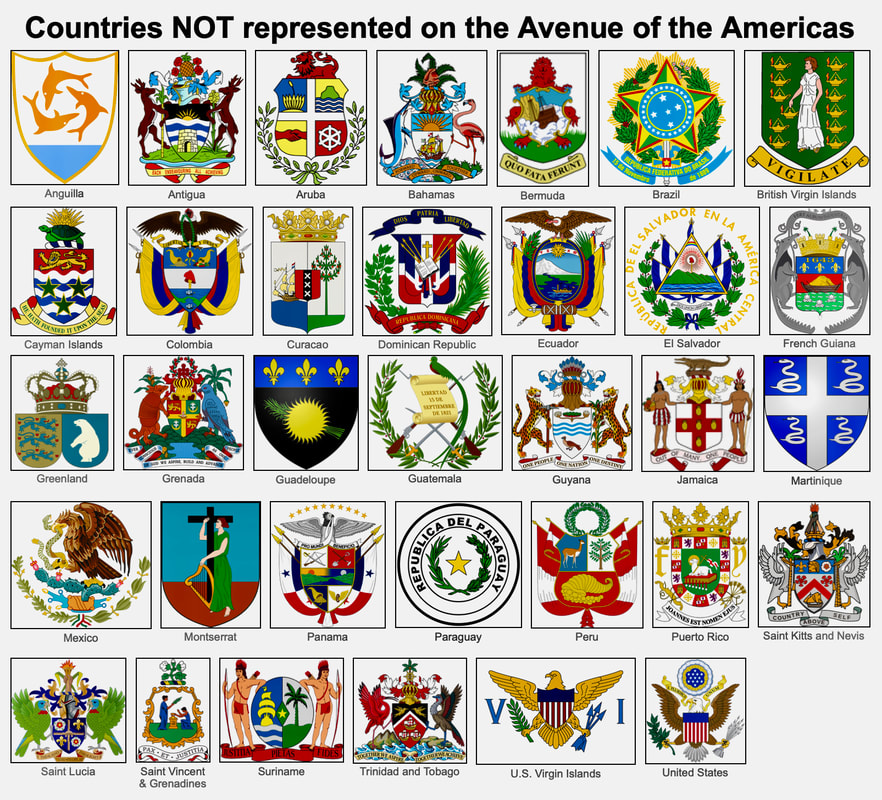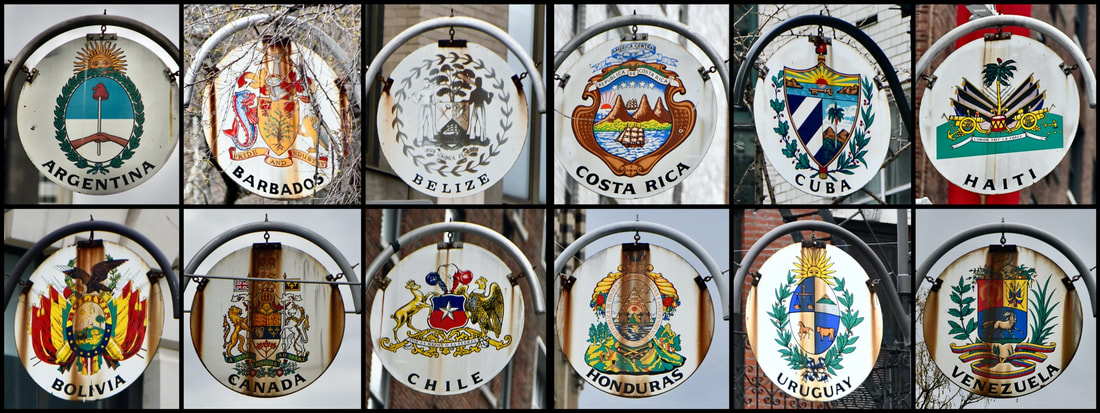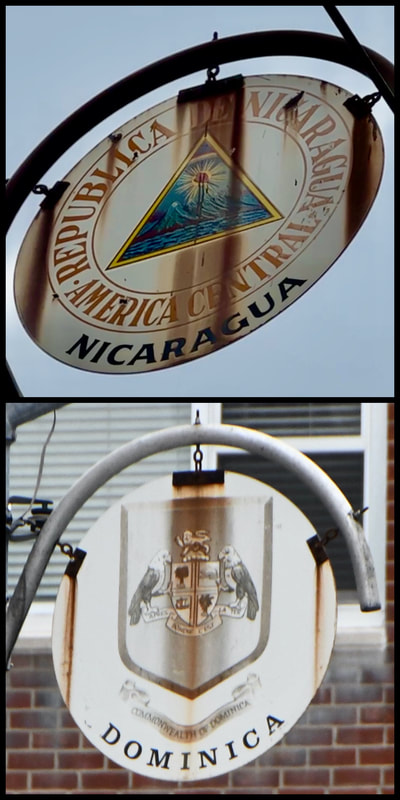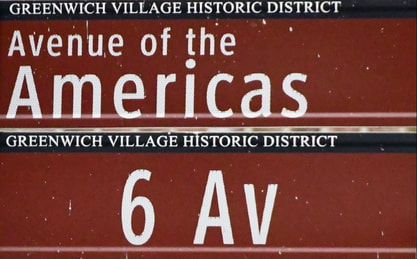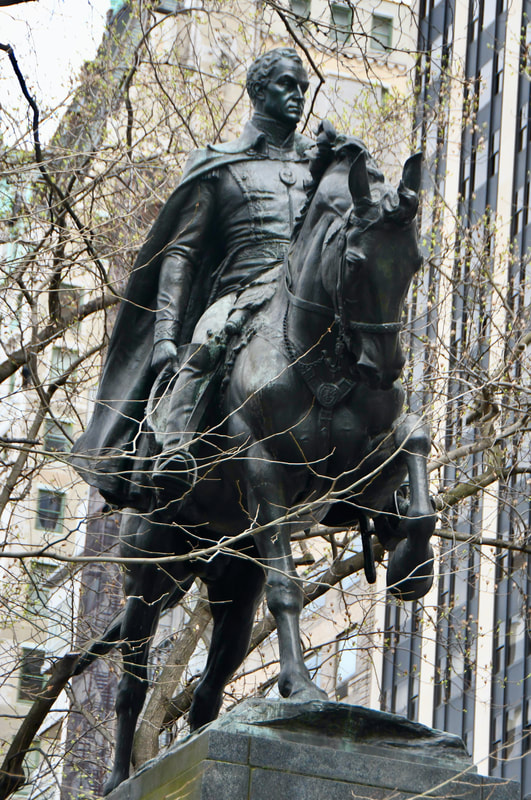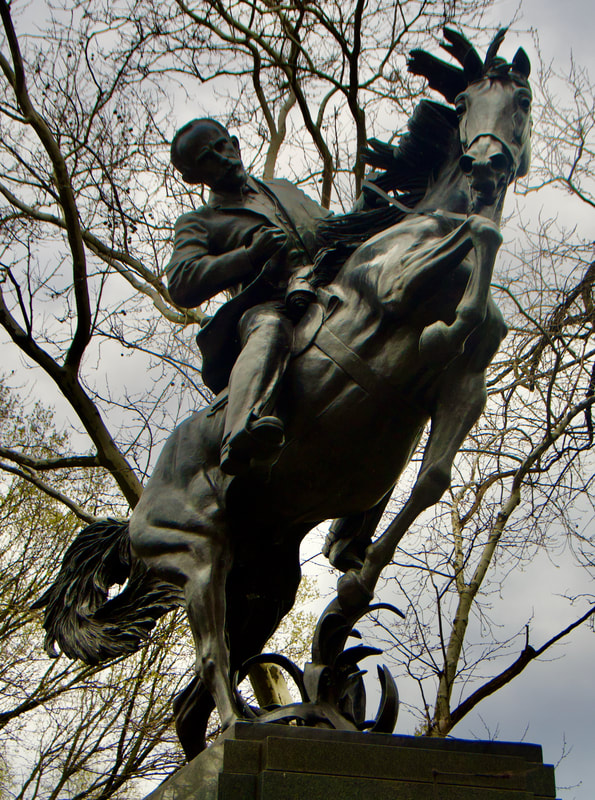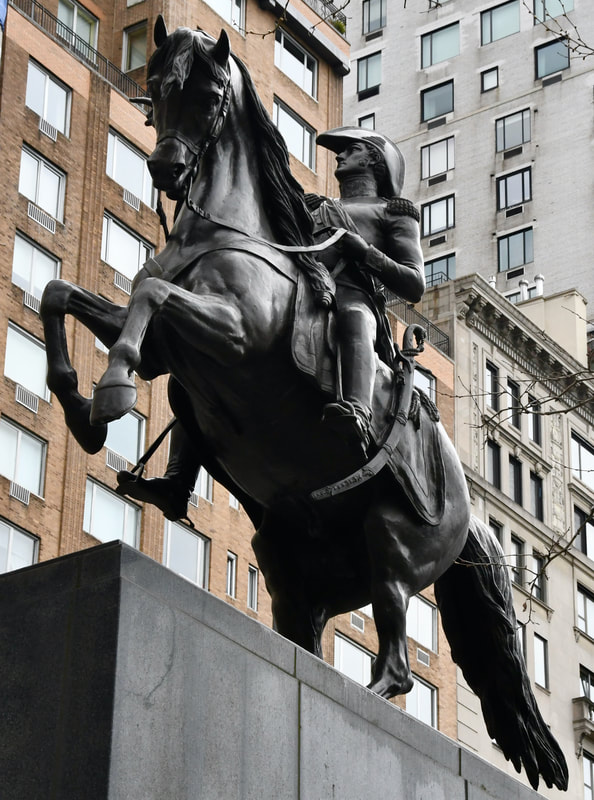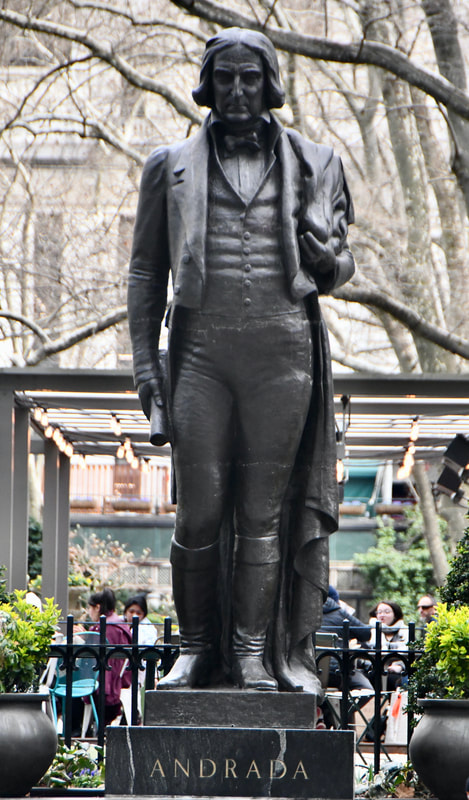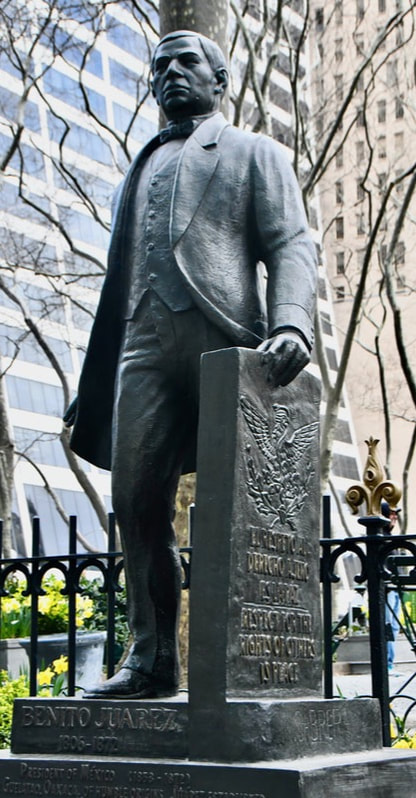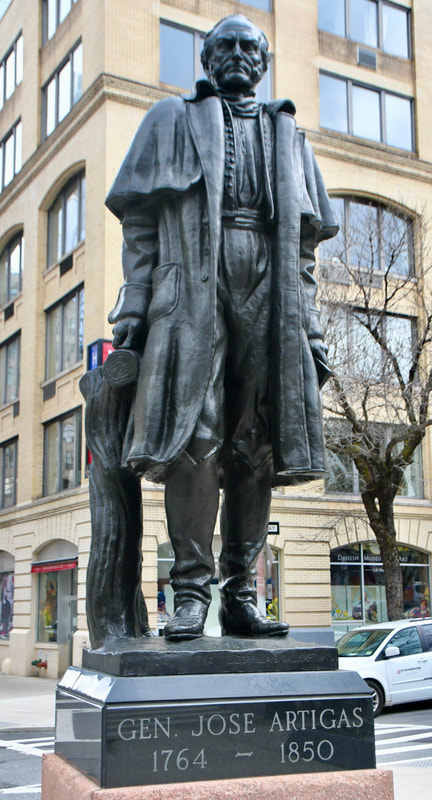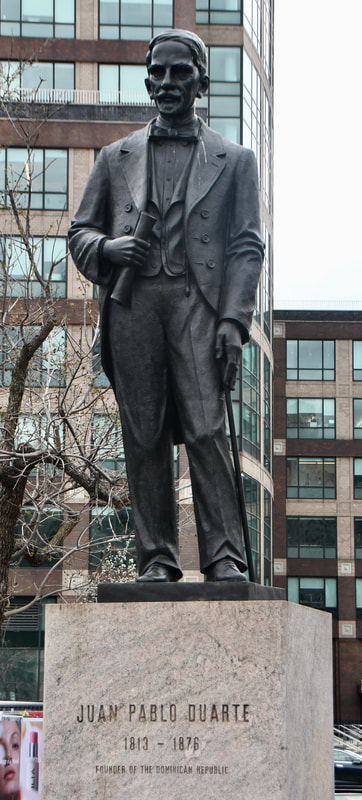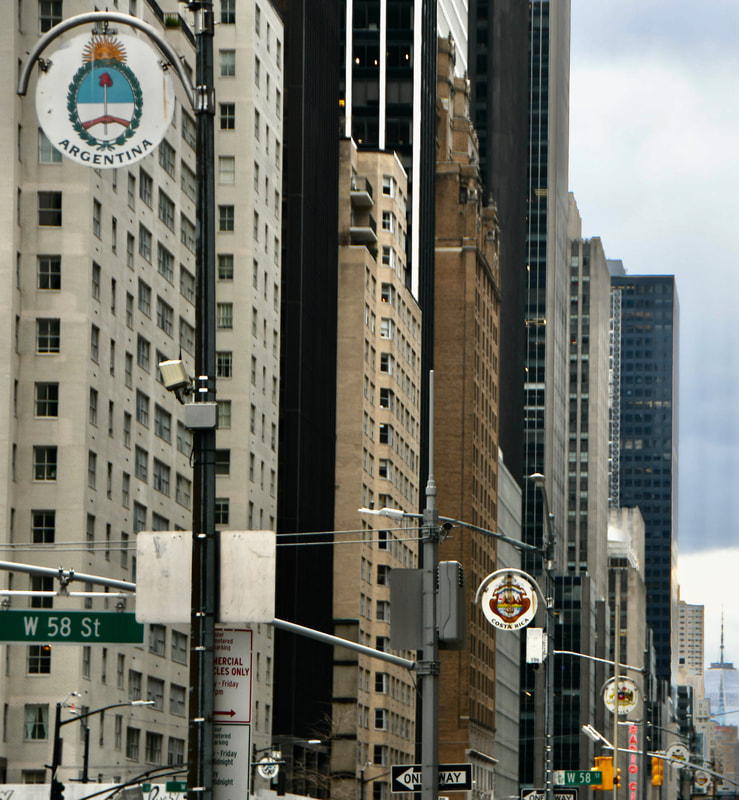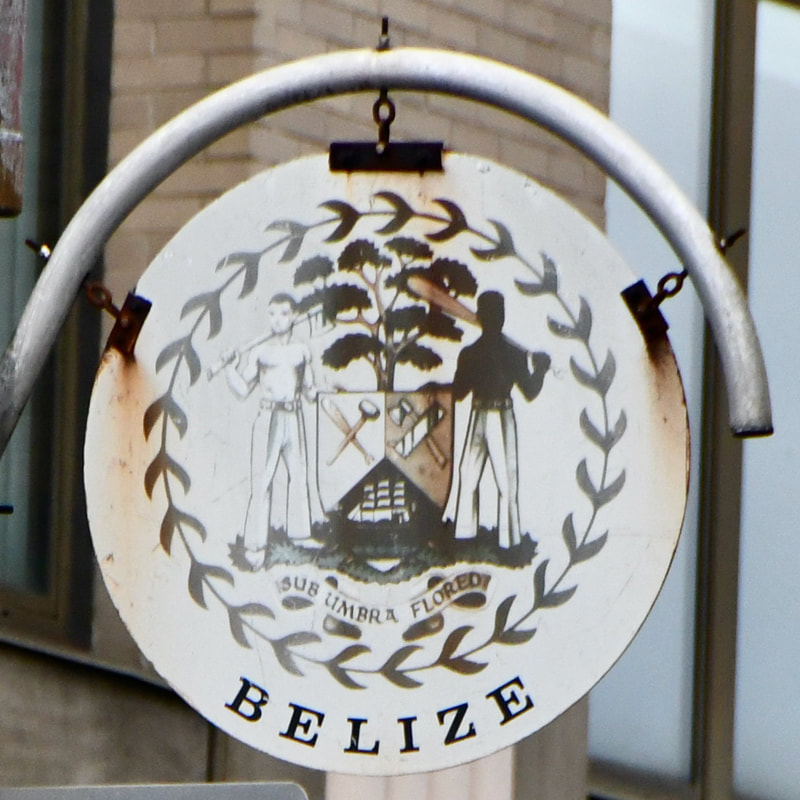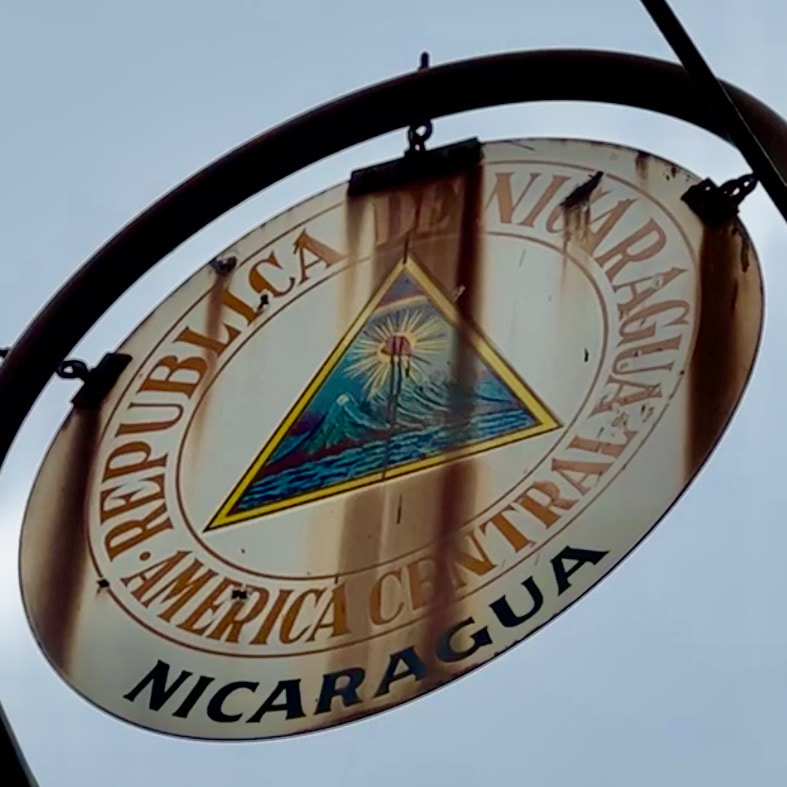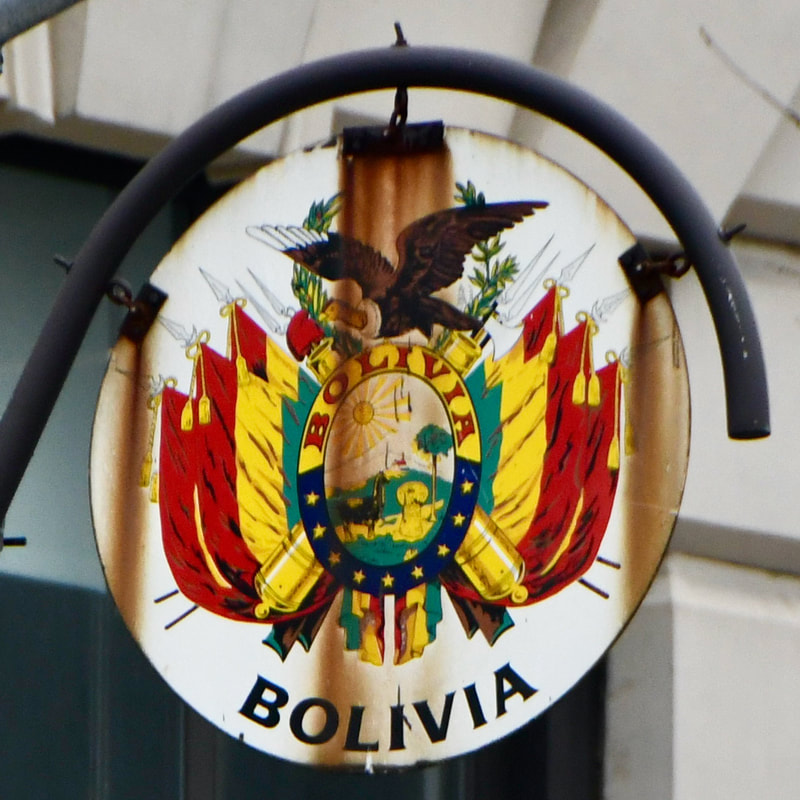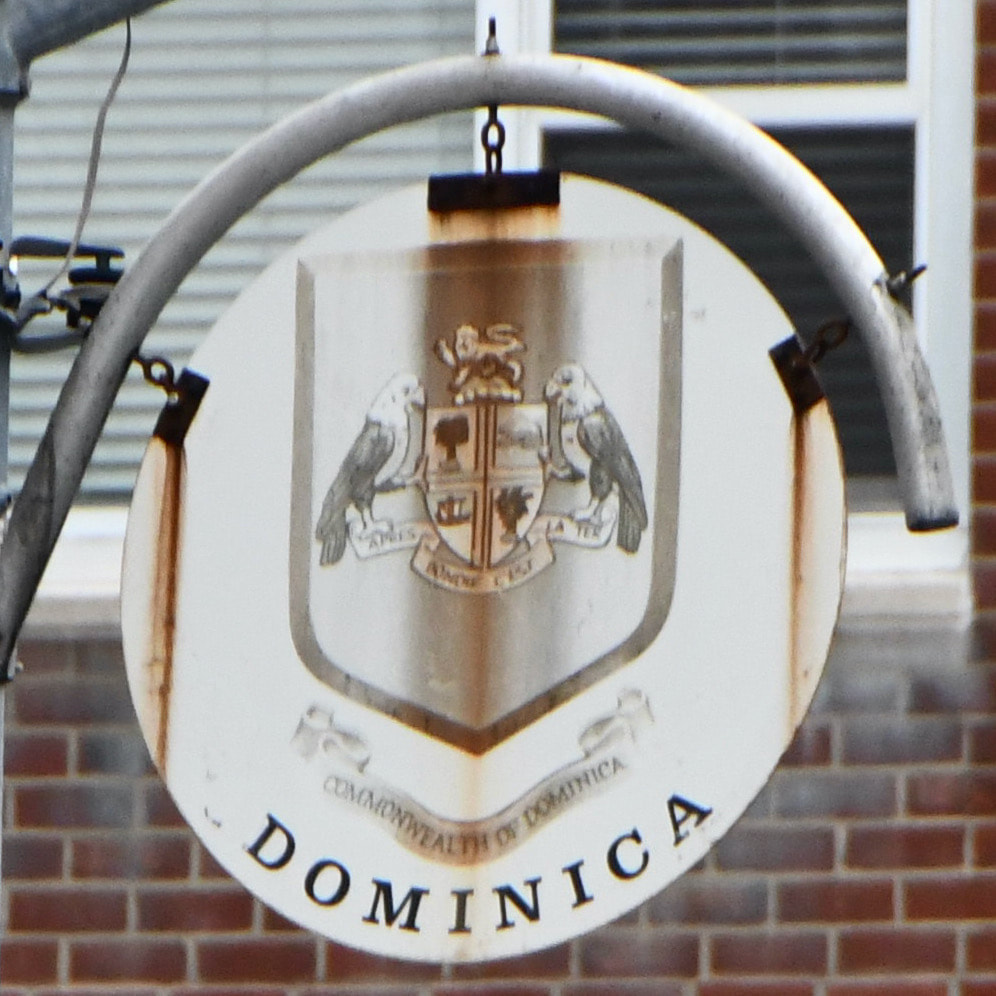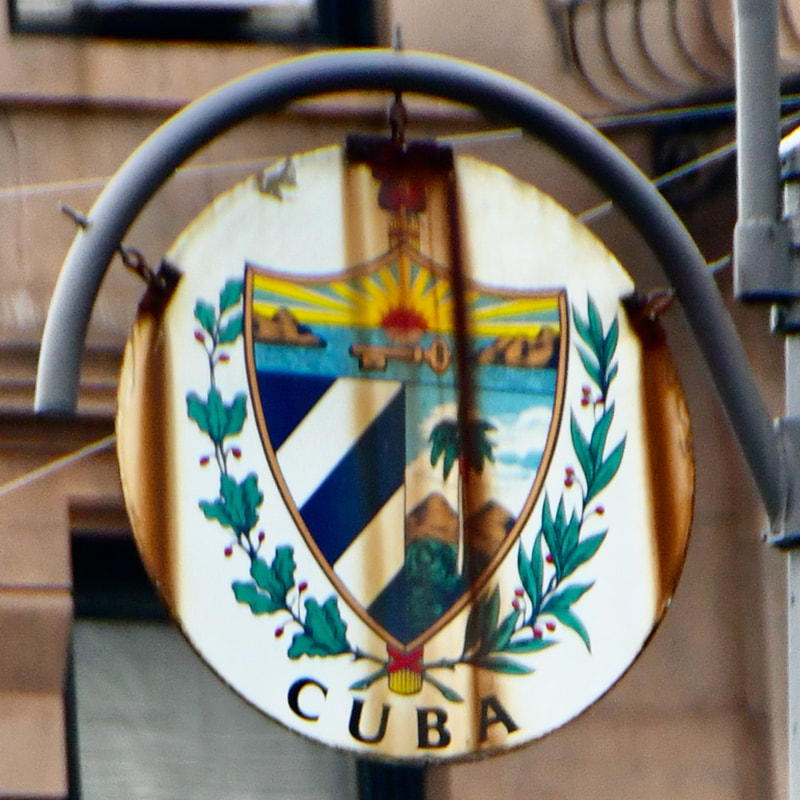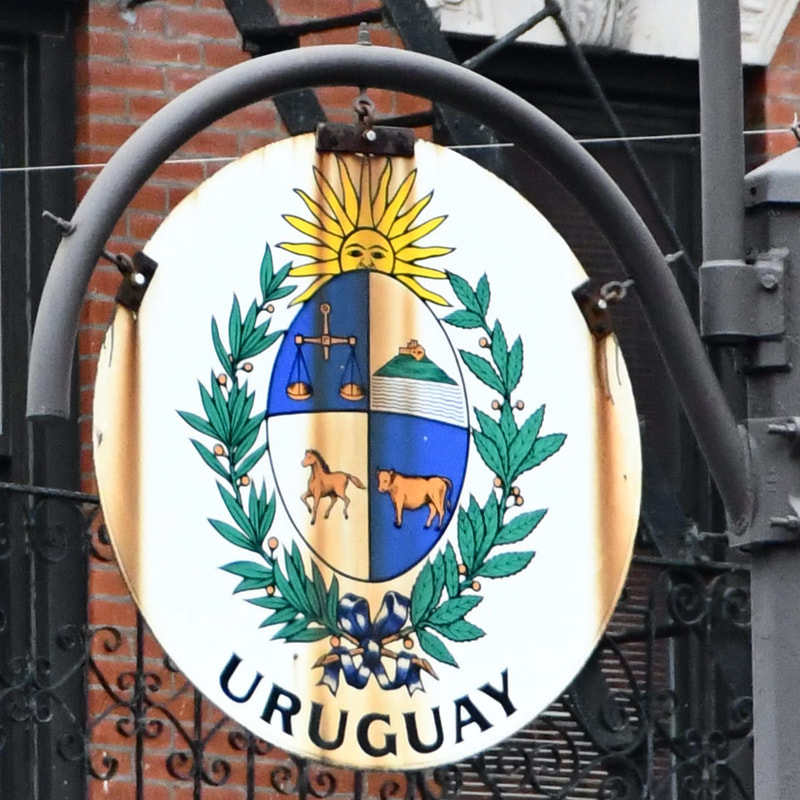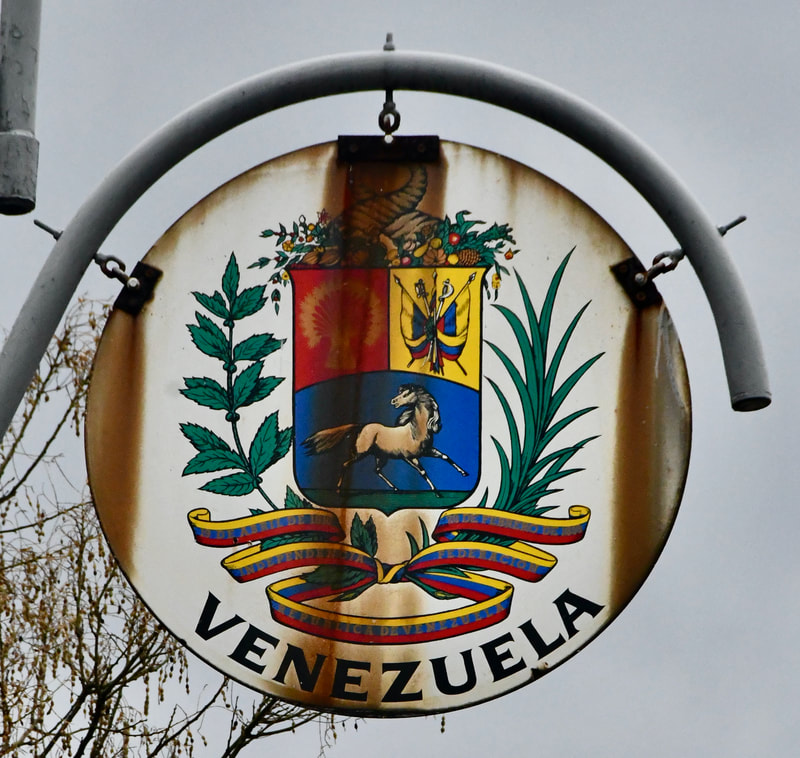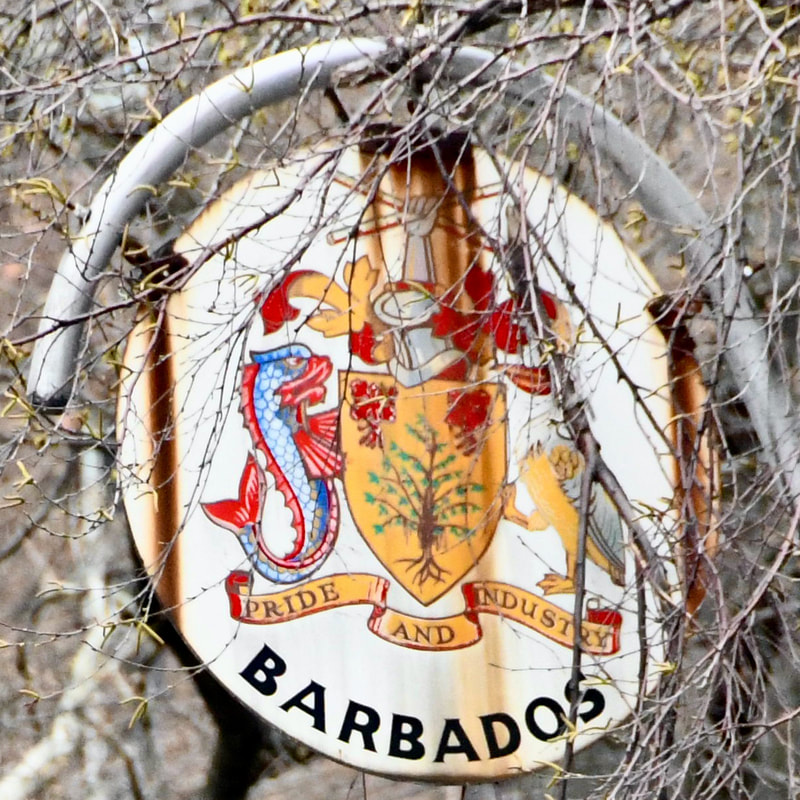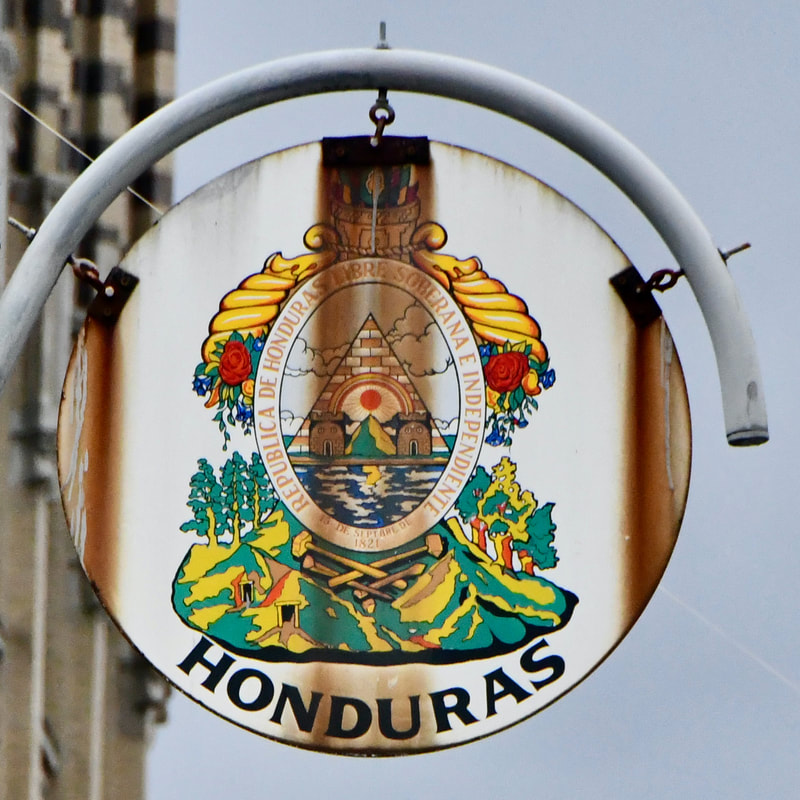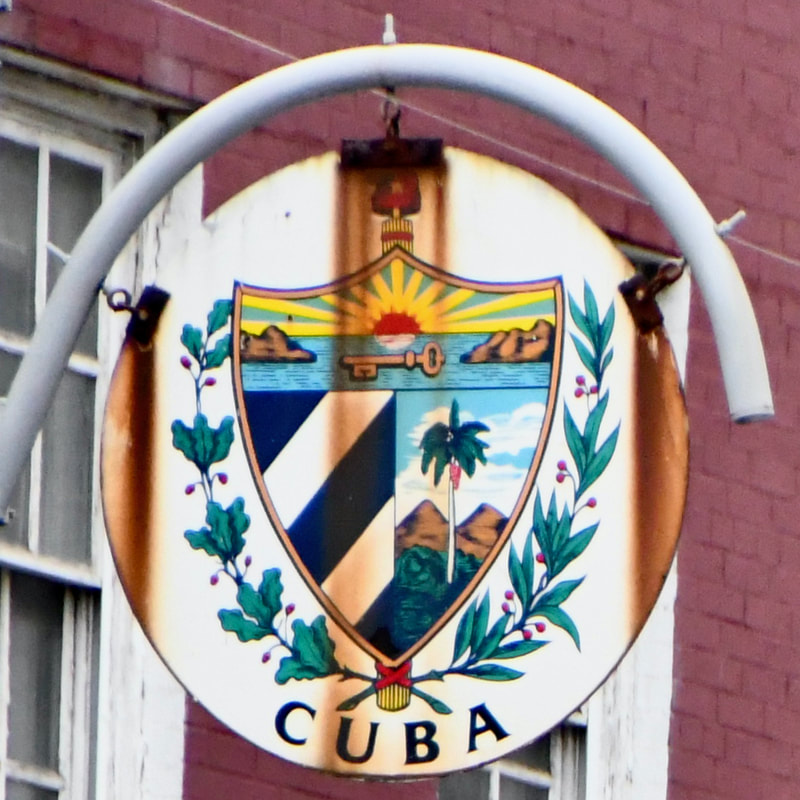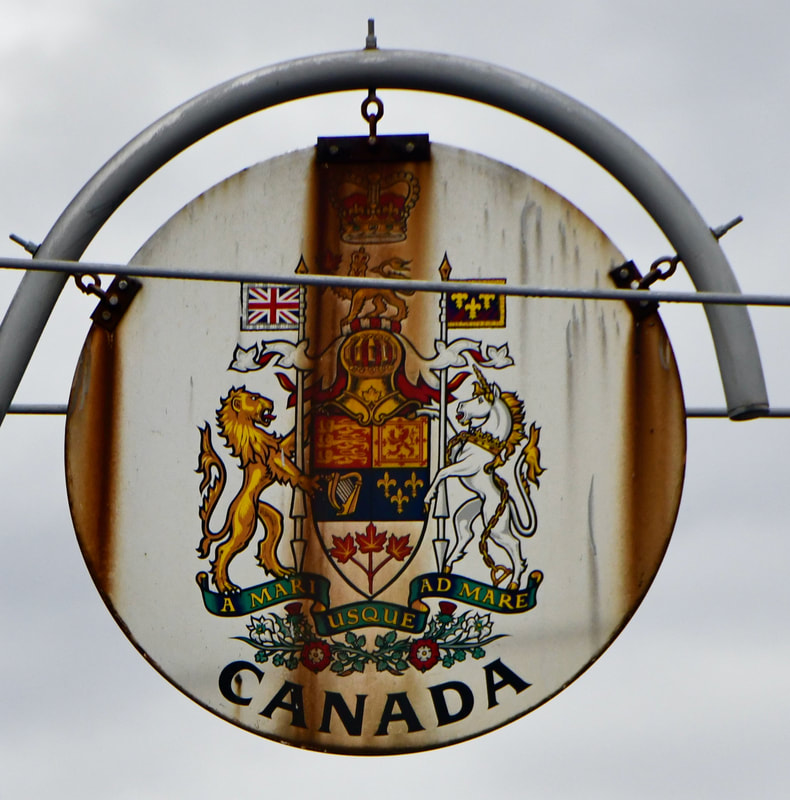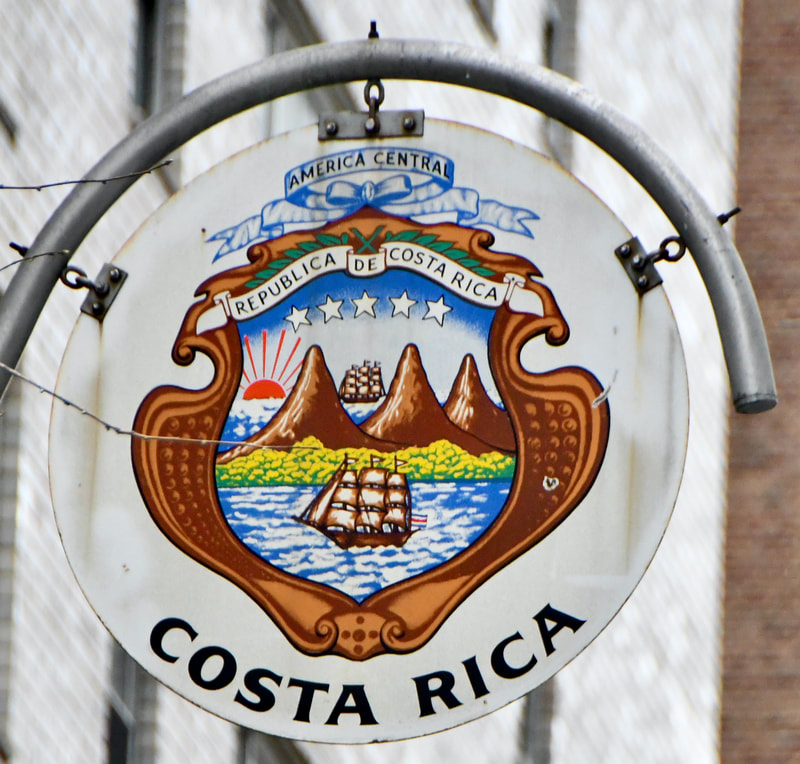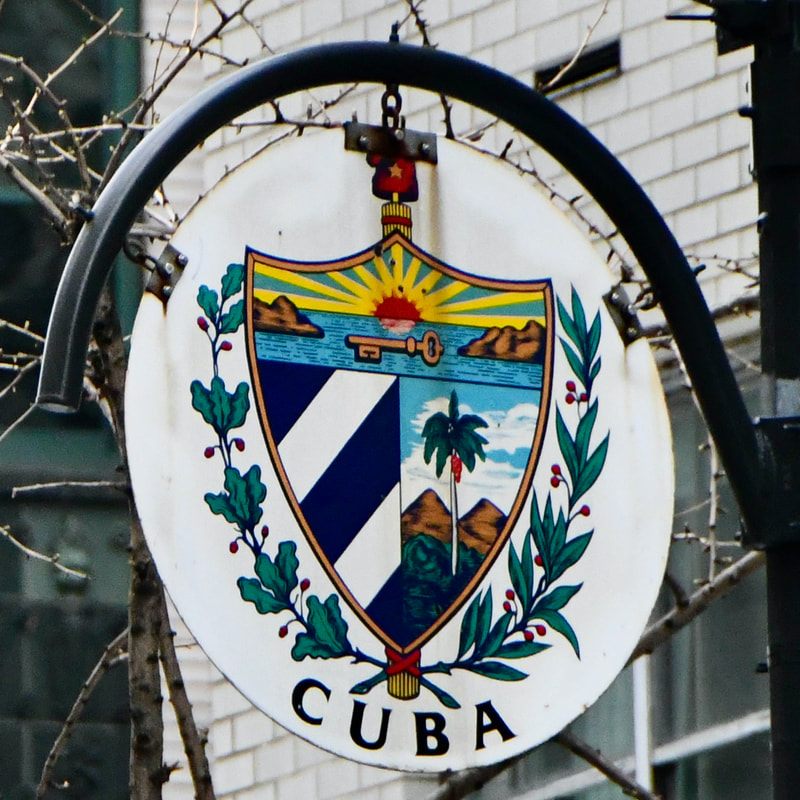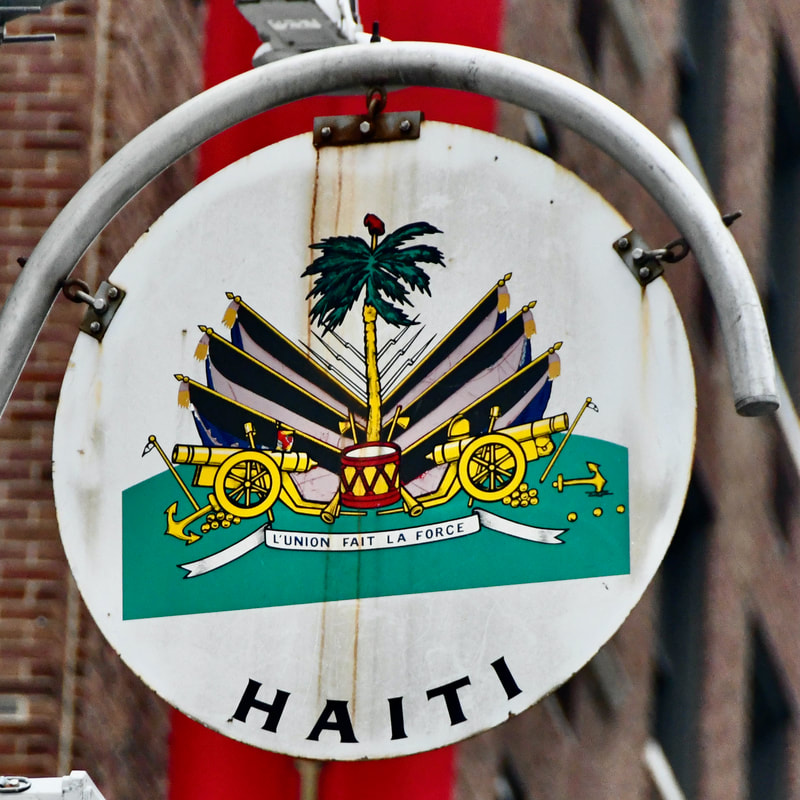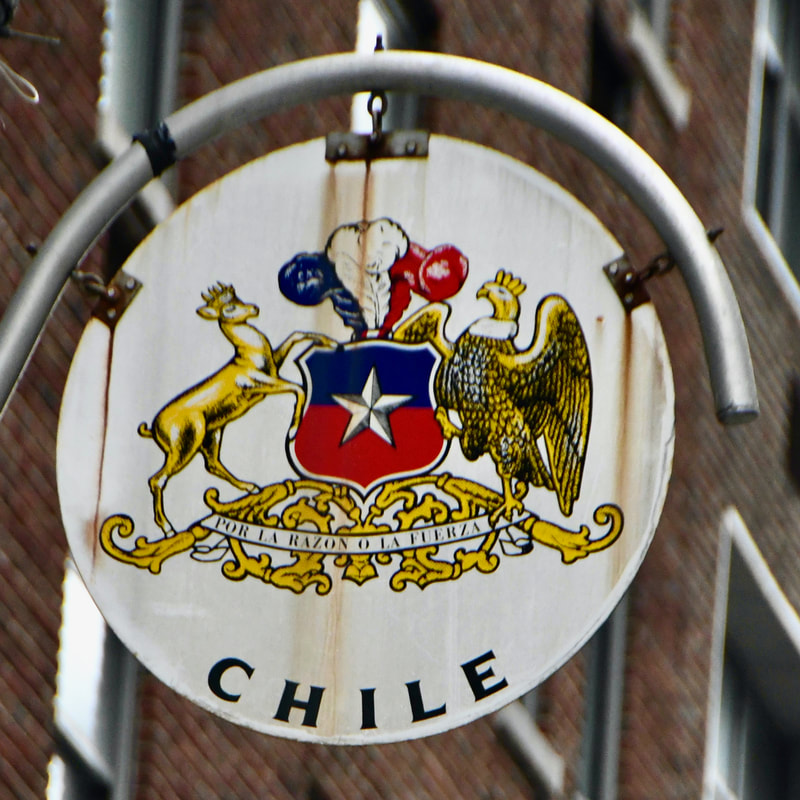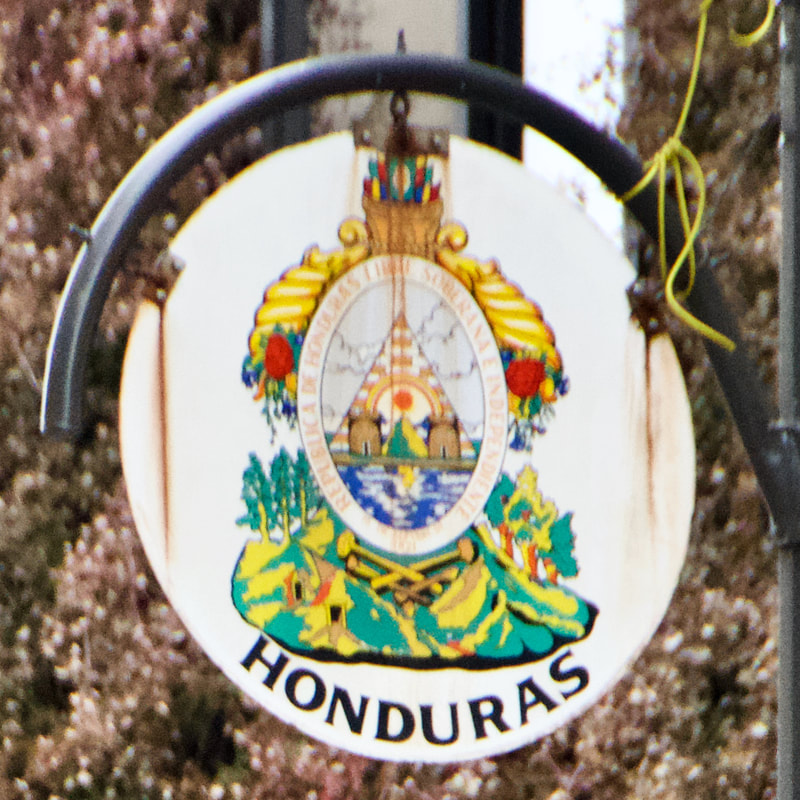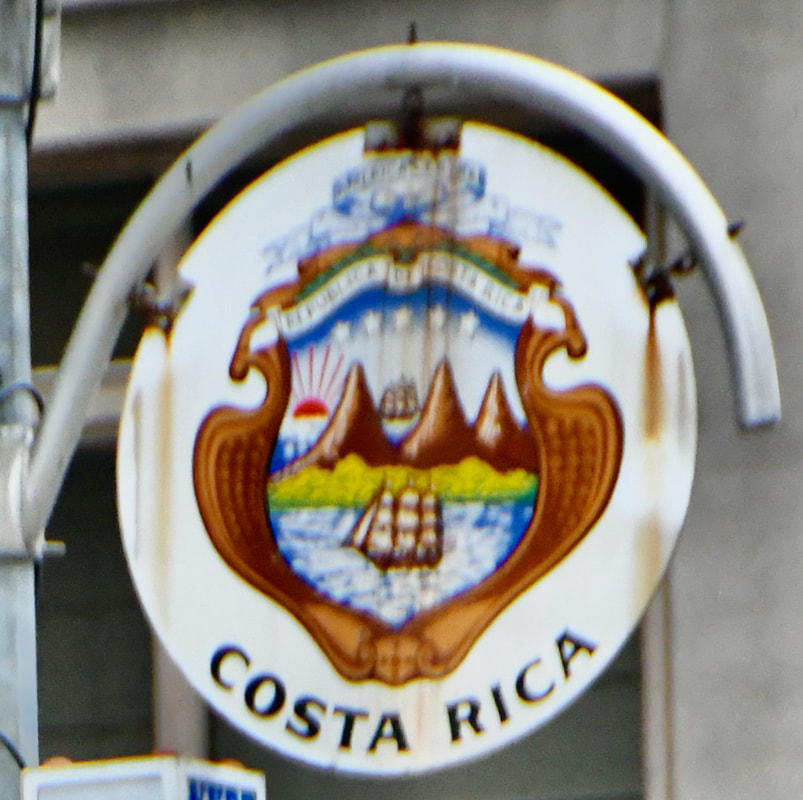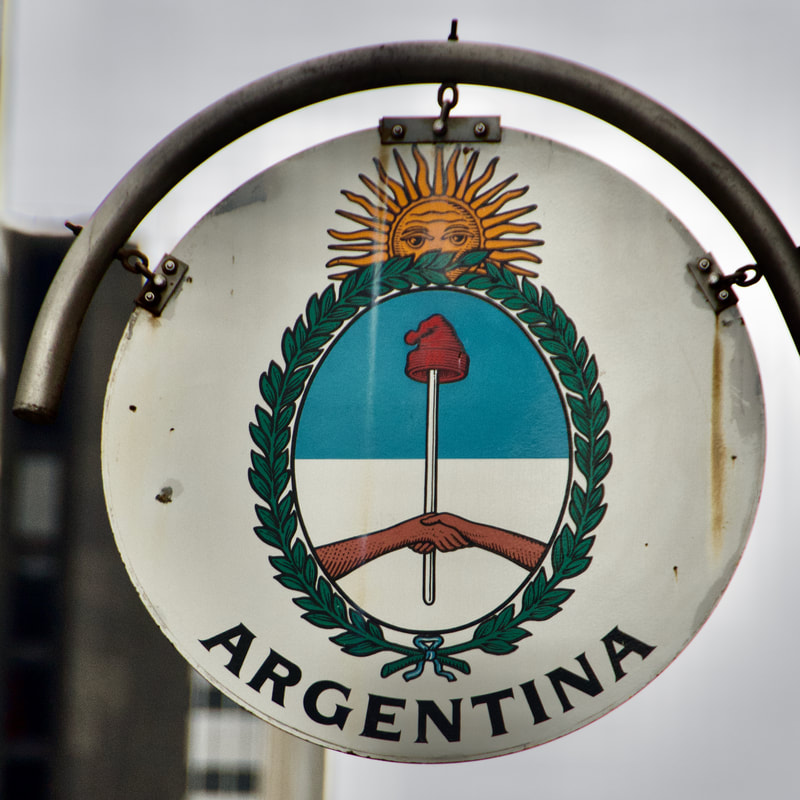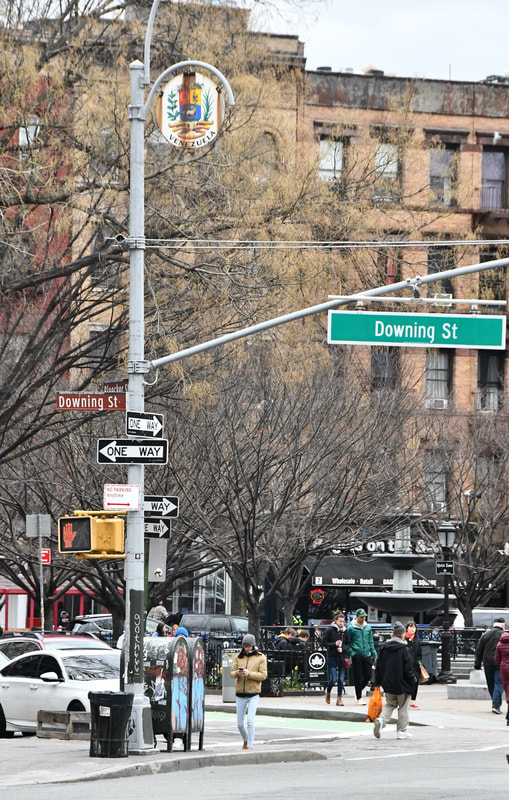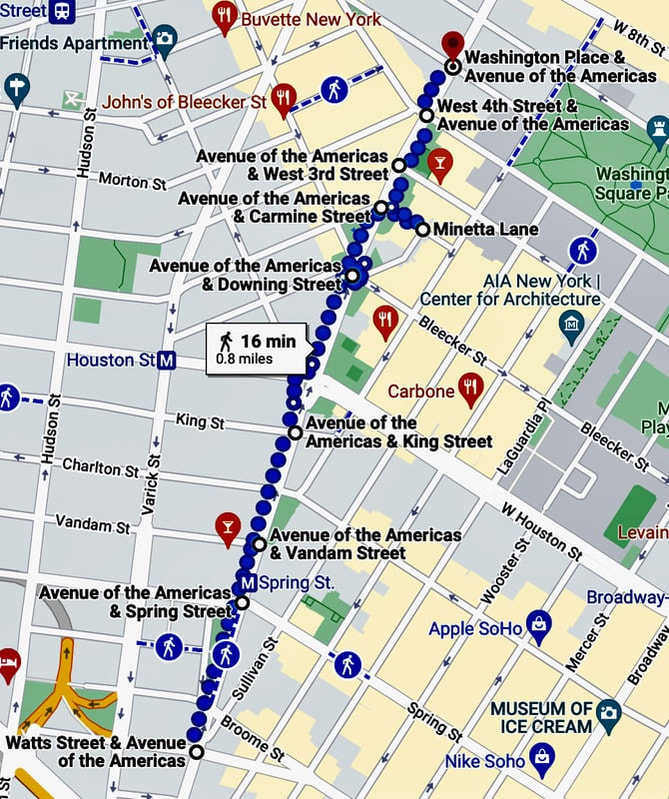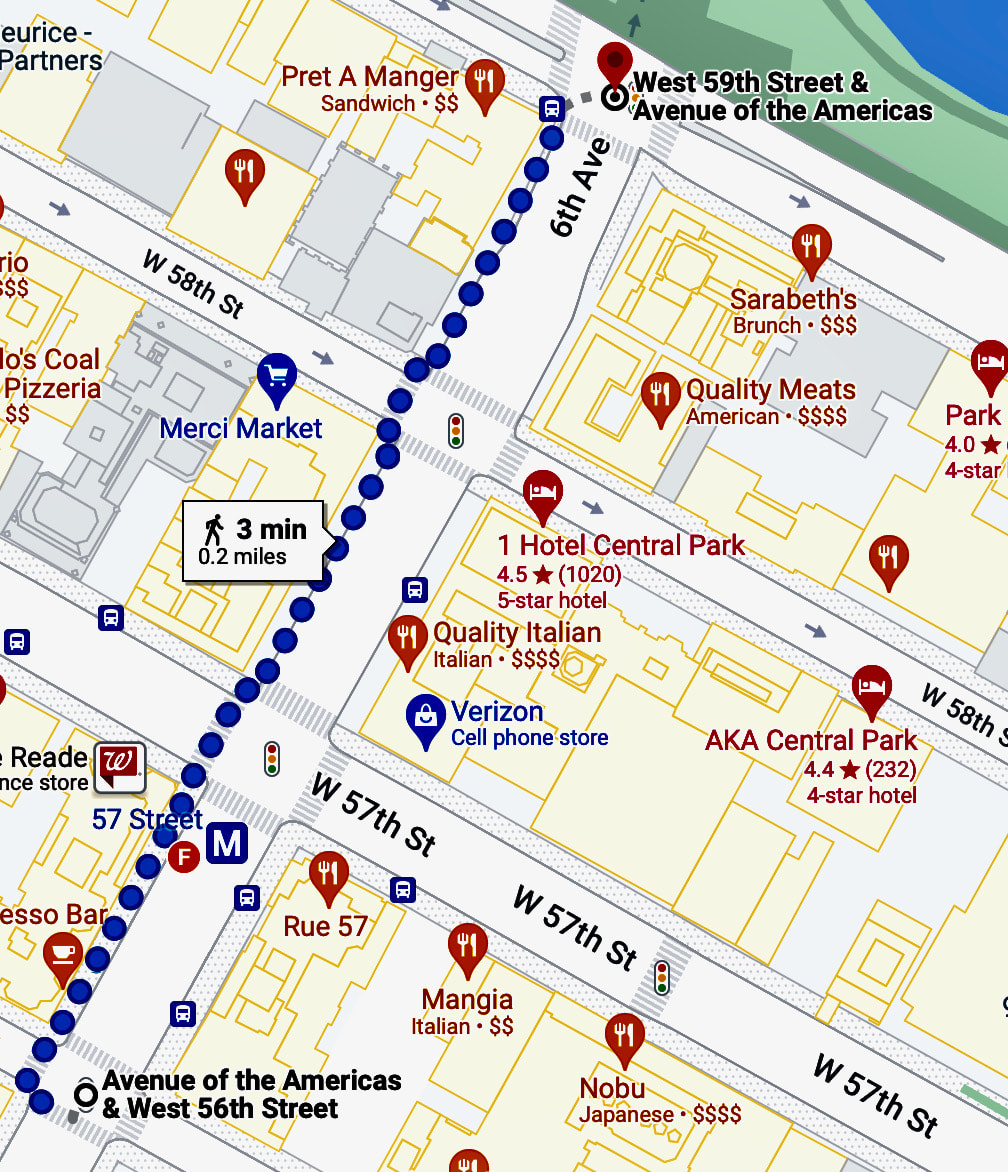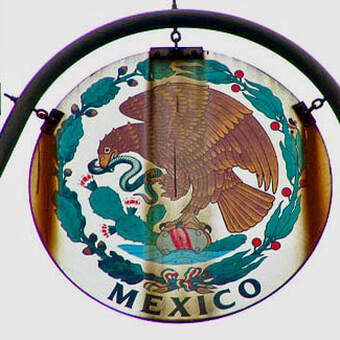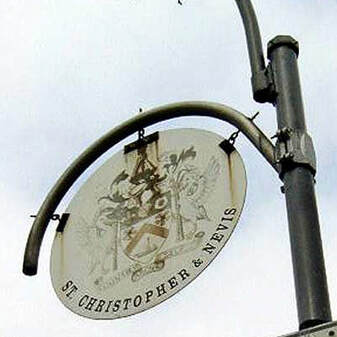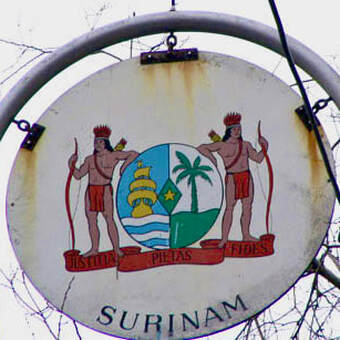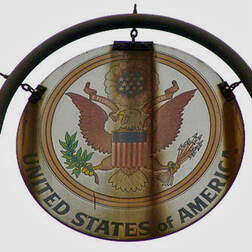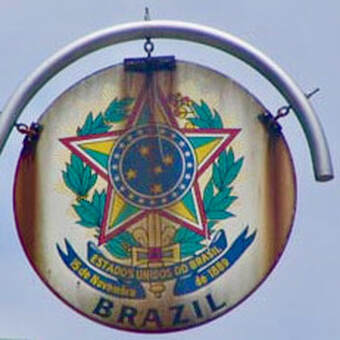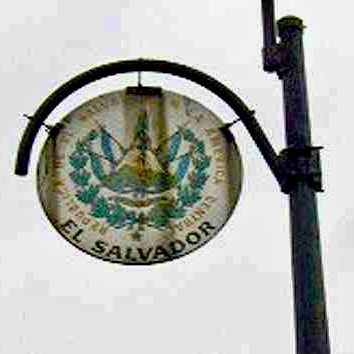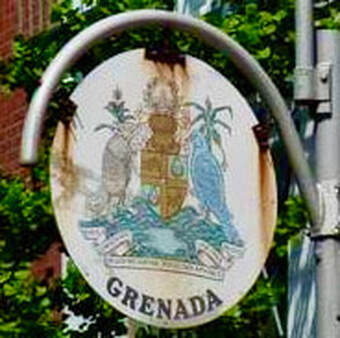34 COUNTRIES ARE NOT REPRESENTED AND ONLY THESE 14 STILL REMAIN:
|
EN ESPANOL:
´SALVEMOS LOS MEDALLONES! |
By Miguel Pérez
April 24, 2022 On Oct. 20, 1945, the wide north-south Manhattan artery known as Sixth Avenue was given an additional name: The Avenue of the Americas. In the words of former New York City Mayor Fiorello H. La Guardia, it was “an expression on the part of our people of the love and affection we have for our sister republics of Central and South America." Since then, statues of seven Latin American statesmen have been erected almost from end to end of the avenue -- from the Dominican Republic's Juan Pablo Duarte on Canal Street to Venezuela's Simon Bolivar, Cuba's José Martí, and Argentina's José de San Martín on 59th Street. Statues of Mexico's Benito Juarez and Brazil's José Bonifacio De Andrada e Silva also stand between 41st and 42nd Streets. And Uruguay's General Jose Gervasio Artigas stands on Spring Street. |
|
For years, those statues have been a source of ethnic pride for Hispanics who live in New York City and for many others who visit the city as tourists.
But there was something else that evoked that sense of pride, something they saw as welcome signs! In 1959, porcelain enamel medallions, depicting the coats of arms of the nations of the Western Hemisphere were installed on 300 lampposts from Canal Street to Central Park. Each was three-feet in diameter and very colorful. Just like with the statues, Hispanics would walk up and down the avenue, searching for the coat of arms of their ancestral homelands. And not just Hispanics, all of the nations of the Americas were represented. |
|
Yet now that the city's Hispanic population is larger than ever -- 2.49 million people — now that we represent 28.3 percent of the city's population, now that English and French-speaking Caribbean islanders are also a huge part of the city, these welcome signs are practically gone!
Do you know how many remain? Less than 20! And they have been so neglected that they are covered with streaks of rust! Many countries are no longer represented. According to published reports, many medallions were removed and never replaced during renovations of the avenue in the 1990s. One of the most recent casualties appears to be the medallion with the U.S. Coat of Arms, on the Avenue of the Americas and Grant Street. According to Google Maps (street level), it was there on June of 2019, but gone by May 2021. |
|
So why did I decide to write a column encouraging New Yorkers to "Save the Medallions on the Avenue of the Americas?" Let me tell you in this short video:
So why should New York City's Hispanic community be better recognized by the Medallions on the Avenue of the Americas?
Let me tell you in this short video! CLICK: Remaining Downtown Medallions:
Remaining Midtown Medallions:
How many Medallions can you find
in this short video? |
Brazil, Colombia, the Dominican Republic, Ecuador, Guatemala, Guyana, Jamaica, Mexico, Panama, Peru, Puerto Rico and El Salvador are among the missing. Since there were originally medallions for more than 30 countries, every country had several of these wonderful emblems for the people of the Americas to look up with pride. Coincidentally, the country with the most remaining medallions is my native Cuba, which still has three!
But I would love to see them all replenished -- all 300! All of those that remain — darkened by streaks of rust that has seeped down from their attachment clips — are pictures of neglect! Ironically, some countries have modified their coasts of arms since they were posted on the avenue, which is more reason to replace them! I'm almost afraid to say this, fearing that there might be a city bureaucrat who would use this as an excuse to get rid of them all. But something needs to get done! We can't allow these beautiful emblems, these symbols of our American fellowship, to rust away into oblivion! According to a 2016 New York Times report, back in 1998 a spokesman for the Transportation Department said, “D.O.T. is reviewing what would be required to put them back up.” Then the Times reported that in 2008, a spokesman for the agency said, “In the interest of safety, we have removed some medallions, but the spirit of the avenue will live on." So there! Isn’t that special? And when the Times asked again in 2016, a spokesman said there were no plans to replace them but that the department would “consider discussions with any entities wishing to pursue the matter.” Really? With all the Hispanic and Caribbean elected officials in New York City, no one has been “wishing to pursue the matter? And what about all those countries that are so well represented by U.N. diplomats in New York City, no interest in such discussion from them either? Not even though some of those countries paid much more for the Hispanic statues on the avenue? And what about the newly elected mayor who claims to be very multiculturally inclusive? Would Eric Adams be interested in such a project? Are Hispanics telling him that this is important to us? And what about Ydanis Rodriguez, the new Transportation Department Commissioner who is Hispanic? Surely, there would be some interest from the “Avenue of the Americas Association,” which is a civic improvement corporation promoting the avenue as “America’s Corporate Corridor?" C’mon, they can’t afford to fix the medallions? Really? They can’t get their wealthy corporate members to contribute to a fund to replenish these emblems and re-beautify the avenue? Imagine how beautifully the avenue could represent the Americas if they had some kind of "adopt a medallion" program, not only to replenish them, but the maintain them! What all these people need is a little public pressure. We should use all sorts of media to let them know how proud we felt when we saw our national emblems hanging over the avenue. It was a beautiful expression of Pan-American unity that is rapidly deteriorating. We should let them know that this is not acceptable! So who can you approach about this? How about our own Hispanic and Caribbean elected representatives? How about Mayor Adams? How about city officials, starting with D.O.T. Commissioner Rodriguez? This is a new city administration, and we should not blame them for the negligence of the past. But we should let them know that the negligence of the future will be on their watch! Or how about reaching out to the diplomats from countries that should be represented by medallions, or to the tenants of the "Corporate Corridor," or to the association that represents them? They should all be approached! And what is the question we should be asking these people? It's simple: "Why don't you do something to SAVE THE MEDALLIONS on the Avenue of the Americas?" If you are a community or social media activist looking for a good cause, you just found one! On Sunday, Aril 10, 2022, I walked on the Avenue of the Americas, from Canal Street to Central Park, and I took photos of the medallions I found. According to the Times article, out of the original 300, there were 22 medallions left in 2016. Now, in 2022, I counted 18, representing only 14 countries! Will we allow them to vanish into oblivion? |
|
Proceeding uptown on the Avenue of the Americas, starting from Watts Street, these are the medallions I have found:
DOWNTOWN: Washington Place — Canada West Fourth Street — Cuba Carmine Street — Honduras Minetta Lane — Barbados Downing Street — Venezuela King Street — Uruguay King Street -- Cuba Vandam Street — Dominica Spring Street — Bolivia Broome Street — Nicaragua Watts Street — Belize |
Photos still found on the Internet, of medallions no longer on the avenue:
|
|
|

